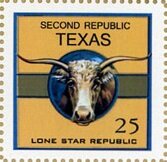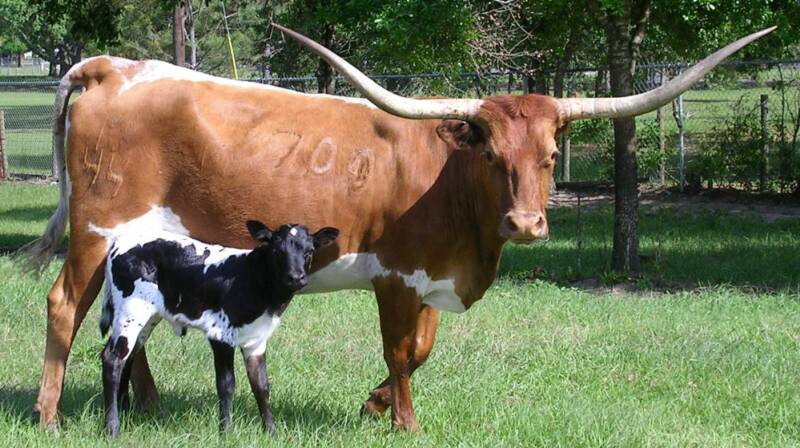Stamp: Longhorn (Cinderellas 2012)
Longhorn (Cinderellas 2012)
01 January (Cinderellas ) within release U.S.A. : Texas Republic goes into circulation Stamp Longhorn face value 25 No Face Value
| Stamp Longhorn in catalogues | |
|---|---|
| Colnect codes: | Col: US-TX 2012-09/1 |
Stamp is square format.
Cinderella stamp issued by the so-called "America Federation of Free States". Denomination is fictitious.Also in the issue U.S.A. : Texas Republic:
- Mini Sheet - "Come and Take It" face value 10*45;
- Stamp - "Come and Take It" face value 45;
- Mini Sheet - Chief face value 8*32;
- Stamp - Chief face value 32;
- Mini Sheet - Longhorn face value 8*25;
- Stamp - Longhorn face value 25;
- Mini Sheet - Native chief face value 6*8;
- Stamp - Native chief face value 8;
- Mini Sheet - Native chief face value 10*10;
- Stamp - Native chief face value 10;
- Mini Sheet - Native chief face value 6*20;
- Stamp - Native chief face value 20;
- Mini Sheet - Native chief face value 6*20;
- Stamp - Native chief face value 20;
- Mini Sheet - Native chief face value 10*20;
- Stamp - Native chief face value 20;
- Mini Sheet - Shield face value 10*10;
- Stamp - Shield face value 10;
- Mini Sheet - Skin tents face value 6*60;
- Stamp - Skin tents face value 60;
|
Data entry completed
50%
|
|
|---|---|
| Stamp Longhorn in digits | |
| Country: | Cinderellas |
| Date: | 2012-01-01 |
| Emission: | Cinderella |
| Format: | Stamp |
| Face Value: | 25 No Face Value |
Stamp Longhorn it reflects the thematic directions:
Animals are multicellular, eukaryotic organisms of the kingdom Animalia (also called Metazoa). All animals are motile, meaning they can move spontaneously and independently, at some point in their lives. Their body plan eventually becomes fixed as they develop, although some undergo a process of metamorphosis later on in their lives. All animals are heterotrophs: they must ingest other organisms or their products for sustenance.
Bulls and cows (also known as cows and bulls or pigs and bulls) is a code-breaking mind or paper and pencil game for two or more players. The game is played in turns by two opponents who aim to decipher the other's secret code by trial and error.
Cattle (Bos taurus) are large, domesticated, bovid ungulates widely kept as livestock. They are prominent modern members of the subfamily Bovinae and the most widespread species of the genus Bos. Mature female cattle are called cows and mature male cattle are bulls. Young female cattle are called heifers, young male cattle are oxen or bullocks, and castrated male cattle are known as steers.
Mammals are any vertebrates within the class Mammalia (/məˈmeɪli.ə/ from Latin mamma "breast"), a clade of endothermic amniotes distinguished from reptiles (including birds) by the possession of a neocortex (a region of the brain), hair, three middle ear bones and mammary glands. All female mammals nurse their young with milk, secreted from the mammary glands. Mammals include the largest animals on the planet, the great whales. The basic body type is a terrestrial quadruped, but some mammals are adapted for life at sea, in the air, in trees, underground or on two legs. The largest group of mammals, the placentals, have a placenta, which enables the feeding of the fetus during gestation. Mammals range in size from the 30–40 mm (1.2–1.6 in) bumblebee bat to the 30-meter (98 ft) blue whale. With the exception of the five species of monotreme (egg-laying mammals), all modern mammals give birth to live young. Most mammals, including the six most species-rich orders, belong to the placental group. The largest orders are the rodents, bats and Soricomorpha (shrews and allies). The next three biggest orders, depending on the biological classification scheme used, are the Primates (apes and monkeys), the Cetartiodactyla (whales and even-toed ungulates), and the Carnivora (cats, dogs, seals, and allies).




